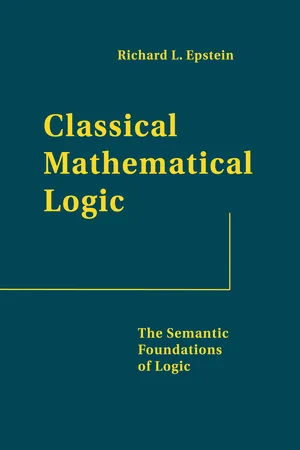
Classical Mathematical Logic
The Semantic Foundations of Logic
Richard L. Epstein
- 544 páginas
- English
- ePUB (apto para móviles)
- Disponible en iOS y Android
Classical Mathematical Logic
The Semantic Foundations of Logic
Richard L. Epstein
Información del libro
In Classical Mathematical Logic, Richard L. Epstein relates the systems of mathematical logic to their original motivations to formalize reasoning in mathematics. The book also shows how mathematical logic can be used to formalize particular systems of mathematics. It sets out the formalization not only of arithmetic, but also of group theory, field theory, and linear orderings. These lead to the formalization of the real numbers and Euclidean plane geometry. The scope and limitations of modern logic are made clear in these formalizations.
The book provides detailed explanations of all proofs and the insights behind the proofs, as well as detailed and nontrivial examples and problems. The book has more than 550 exercises. It can be used in advanced undergraduate or graduate courses and for self-study and reference. Classical Mathematical Logic presents a unified treatment of material that until now has been available only by consulting many different books and research articles, written with various notation systems and axiomatizations.
Preguntas frecuentes
Información
XIX | Two-Dimensional Euclidean Geometry |
in collaboration with Leslaw Szczerba |